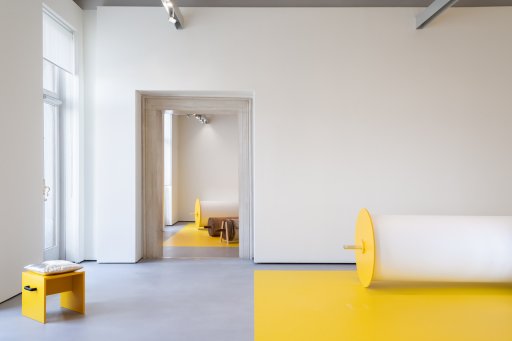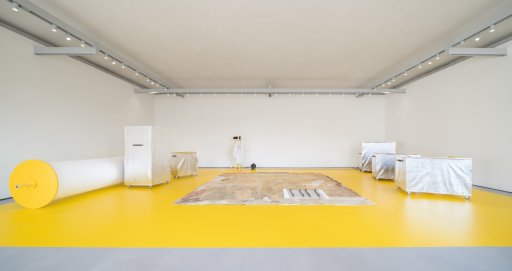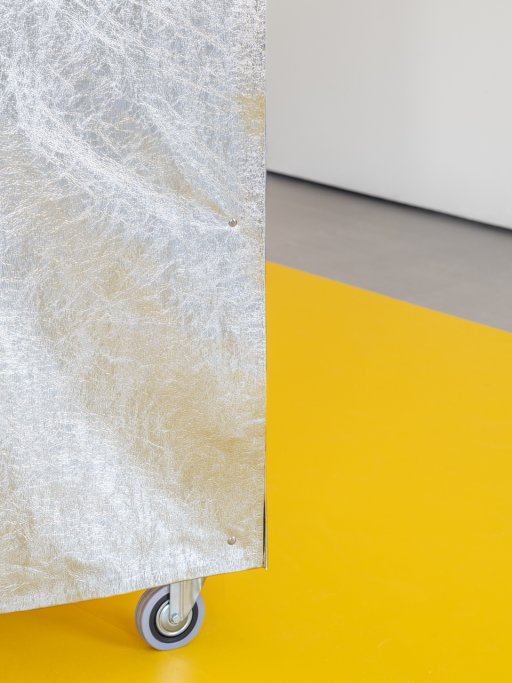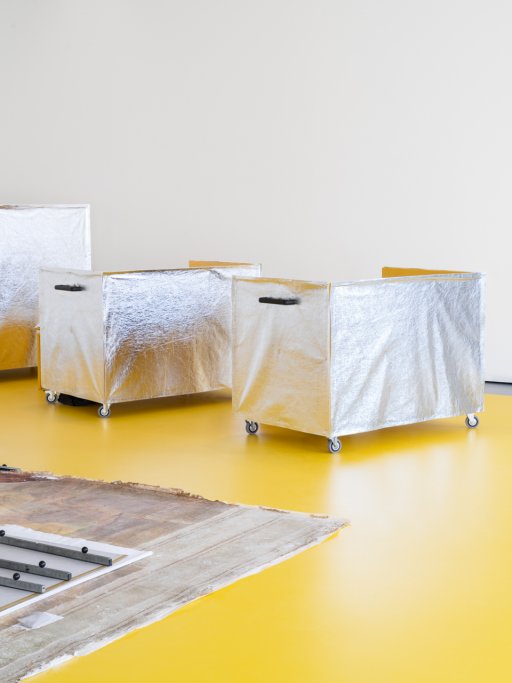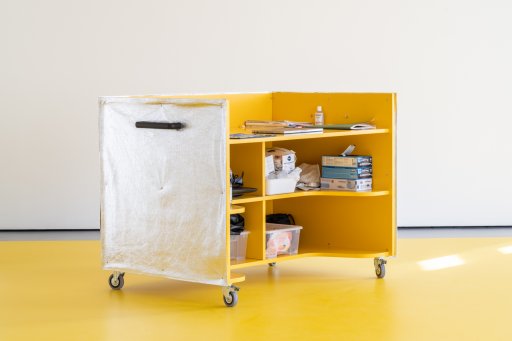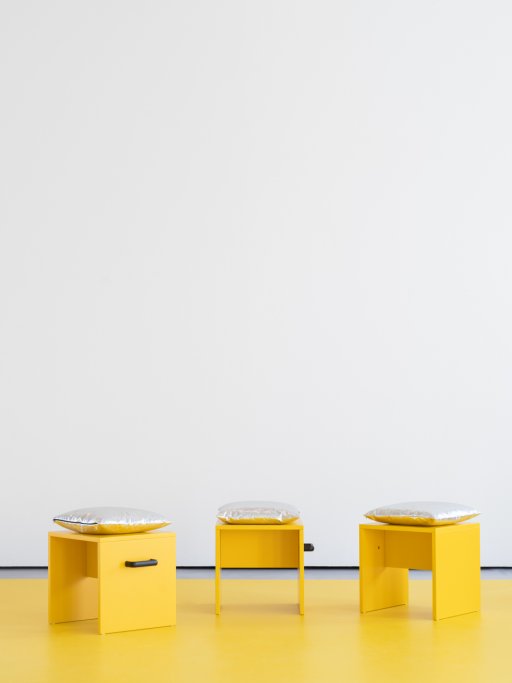Strappi is the name of a project devoted to restoration and its practices where Palazzo Grassi has decided to reveal to the public the conservation work on two murals created between 1740 and 1745 by the Italian artist Carlo Innocenzo Carloni and today part of the heritage of the institution.
Palazzo Grassi invited us to stage the show in a manner completely capable of substituting for any kind of written explanations.
The choice of materials, colors, and clothing designed by the studio is the narrative tool, emotional and immediate, through which the project communicates.
We used color to emphasize the theatricality of the project, giving chromatic emphasis to the furniture on which the tools are placed, to the workers’ clothing, to the walls, and to the floors that, like tatami mats, must endure the repetitive, obsessive steps of whoever is working on the image.
The restoration, is a theater piece in which the restorer-actors move around on a stage defined by the yellow color on a patch of the floor. We wanted to inhabit the space with a landscape of furnishings that are very simple but that contain strong chromatic and design connotations — an outer shell of silver technical fabric, intended to evoke the laboratory of the future, juxtaposed with a colored interior — that both contains and hides the tools and the paint.
The shape of the murals, that is to say a square, is used as a construction module for the assembled furniture and as a distinctive symbol for personalizing the restorers’ uniforms.
Client: Palazzo Grassi/Pinault Collection
Uniforms crafted by: Anthony Knight
Photo: Marco Cappelletti
Year: 2021

Strappi is the name of a project devoted to restoration and its practices where Palazzo Grassi has decided to reveal to the public the conservation work on two murals created between 1740 and 1745 by the Italian artist Carlo Innocenzo Carloni and today part of the heritage of the institution.
Palazzo Grassi invited us to stage the show in a manner completely capable of substituting for any kind of written explanations.
The choice of materials, colors, and clothing designed by the studio is the narrative tool, emotional and immediate, through which the project communicates.
We used color to emphasize the theatricality of the project, giving chromatic emphasis to the furniture on which the tools are placed, to the workers’ clothing, to the walls, and to the floors that, like tatami mats, must endure the repetitive, obsessive steps of whoever is working on the image.
The restoration, is a theater piece in which the restorer-actors move around on a stage defined by the yellow color on a patch of the floor. We wanted to inhabit the space with a landscape of furnishings that are very simple but that contain strong chromatic and design connotations — an outer shell of silver technical fabric, intended to evoke the laboratory of the future, juxtaposed with a colored interior — that both contains and hides the tools and the paint.
The shape of the murals, that is to say a square, is used as a construction module for the assembled furniture and as a distinctive symbol for personalizing the restorers’ uniforms.
Client: Palazzo Grassi/Pinault Collection
Uniforms crafted by: Anthony Knight
Photo: Marco Cappelletti
Year: 2021
